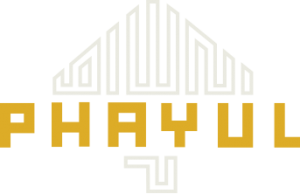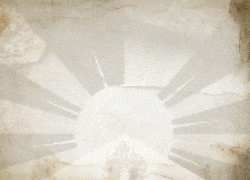By Louise Chen
 NEW YORK — Tibet is internationally known as a bastion of spirituality and a political flashpoint, but one thing this plateau region north of the Himalayas is not commonly associated with is contemporary art. Now, with the first museum exhibition of recent Tibetan art in the United States, New York’s Rubin Museum of Art is attempting to present Tibet’s visual culture in the context of the 21st century. Titled “Tradition Transformed” and running from June 11 to October 18, the show features recent works by nine Tibetan contemporary artists living both in Tibet and the diaspora: Losang Gyatso, Gonkar Gyatso, Kesang Lamdark, Pema Rinzin, Tsherin Sherpa, Penba Wangdu, Tenzin Norbu, Dedron and Tenzing Rigdol.
NEW YORK — Tibet is internationally known as a bastion of spirituality and a political flashpoint, but one thing this plateau region north of the Himalayas is not commonly associated with is contemporary art. Now, with the first museum exhibition of recent Tibetan art in the United States, New York’s Rubin Museum of Art is attempting to present Tibet’s visual culture in the context of the 21st century. Titled “Tradition Transformed” and running from June 11 to October 18, the show features recent works by nine Tibetan contemporary artists living both in Tibet and the diaspora: Losang Gyatso, Gonkar Gyatso, Kesang Lamdark, Pema Rinzin, Tsherin Sherpa, Penba Wangdu, Tenzin Norbu, Dedron and Tenzing Rigdol.
Advocates for the preservation of their birthplace’s traditional art, these artists are also agents of transformation in the contemporary Tibetan art scene, which has had been in existence for only two decades. ARTINFO recently spoke with co-curator Rebecca Bloom about the show, the artists included in it, and the movement behind the study and promotion of contemporary Tibetan art.
What challenges did you face in curating this exhibition?
I think our challenge was to choose the representative works among many of our favorite ones. We have nine artists and a moderate gallery space, so we have to be selective. In the meantime, we hope that each artist’s works speak to the theme “Tradition Transformed” and to each others’ as well.
When did you begin planning for the exhibition?
We sent out letters last June to invite these artists to participate in the exhibition. We wanted to give the first voice to each artist to determine the best way to make their museum debut in the U.S.
Were these artworks all created over the past year?
I will say 40 percent of the works on view came straight from the artist’s studio and have never been displayed before. For instance, Gonkar Gyatso, currently the most well known Tibetan artist, is showing the first three-dimensional work he’s ever created and his signature sticker-made Buddha collages.
Can you tell me about Gyatso’s work?
Gokar Gyatso was raised in London. He approaches Buddhism as a modern human being. In his artworks, the tradition has been absorbed into pop culture and lost its sanctity. In his series of Buddha collages, he utilizes colorful stickers to compose the Buddha collage, in which the tradition and religion lost some substance.
Are Buddhist figures and iconography still important to most contemporary Tibetan art?
Yes, for most Tibetan artists. But Pema Rinzin has gone to the abstract direction. Dedron and Norbu tackles everyday Tibetan culture and folklore, while Tenzin and Sherpa deal with the experience of the Tibetan expatriate community. The symbolism and iconography you see in their contemporary art and in traditional paintings represent the elite Tibetan culture. But Tibetan culture is inevitably linked to the religion and the political context. These artists are not overtly political, but they do more or less touch upon it. It’s more about how the culture and religion are preserved. This sense of cultural responsibility is lost in the younger generations. Many Tibetan artists are traditionally trained — it’s natural for them to use these religious images that comprise part of their visual vocabulary. Also, in this art market, they are able to create their identity by incorporating these motifs and visual elements.
What is their attitude toward pop culture and contemporary art outside of Tibet? What are their expatriate experiences like?
Though it’s difficult to get visas, these artists do travel out of Tibet, not to mention that Lhasa is now a modern-day city. Some of these artists, now in their 40s and 50s, have been living in the west for a long time. You can see the conversation between the East and the West in their paintings. For instance, the presence of pop culture and some Murakami influence are quite evident in Gonkar Gyatso’s Buddha collages. These Tibetan artists are hip and highly aware of what’s going on in the international art world.
Can you briefly talk about artist Pema Rinzin?
Pema Rinzin is based in Brooklyn. Trained under the mentorship of Tibetan thangka [silk paintings with embroidery, usually depicting Buddha] masters, he is also teaching thangka painting in New York to some graphic designers and tattoo artists who have lost touch with the brush stroke in their commercial work. Pema has also lived in Japan for nine years, so there’ s some Japanese influence in his works as well. Lamdark was raised in Switzerland and educated in New York. He is able to bridge the gap between Tibetan tradition and the contemporary culture.
What about Kesang Lamdark?
Lamdark utilizes found objects such as beer cans and Red Bull cans in his religious-themed installations. Also a lover of pointillism, he punctures the bottom of the cans with a pin and use them as the light box for his photography. He took the same approach to Temple Dancer, the image of which was pin-pricked onto the bottom of the can, which was then backlit by natural light so the outline of the image can be seen through the mouth of the can. His childhood experience also inspired him to employ the punctured beer cans in his works. When he was a child, he suffered from facial paralysis. After being taken to a traditional Tibetan doctor, the paralysis was cured by dipping the acupuncture needles in the melted gold and applying onto his face.
Is it true that there are not many scholars who are focused on the study of contemporary Tibetan art?
No. It is really a new field, so it posed another challenge to us when producing the catalog essays for the exhibition. One writer, Michael Sheehy, is a scholar studying Tibetan culture and history, and Anna Bremm is a researcher who has recently focused on Tibetan art. So the exhibition serves as a jumping-off place and provides a foundation for the study of contemporary Tibetan art.
What is the art scene like in Tibet?
Lahsa’s Artist Guild was the first contemporary art gallery, which was established in the mid-80s. They also showcased works by ethnic Chinese artists. Their curatorial criteria was not built on ethnic divide but promoting contemporary art in Tibet.
What is the timeline of contemporary Tibetan art roughly like?
Since the 80s, Tibetan artists have started making art for the purpose of self-expression. Some talented Tibetan artists have always found ways to put their thumbprints even in the most complex and rigid religious paintings and Tibetan iconographic art. Other visual elements such as motifs, decorative symbols, and landscapes, though secondary to iconography, are of great artistic values in contemporary Tibetan art. Religious painters in Tibet play a similar role to Michelangelo, who did commissioned works for the Church. Many artists insist that the tradition is critical to the contemporary Tibetan aesthetic.
Are European collectors paying more attention to the Tibetan art than U.S. collectors? If so, when did European collectors start collecting contemporary Tibetan art?
Yes, you’re right. Fabio Rossi, who started dealing in classical Asian art since the late 90s, discovered the art scene in Lhasa in early 2000s. They organized a contemporary Tibetan art group show in 2005 at their gallery Rossi and Rossi in London. At that time, there was no market for contemporary Tibetan art, so it was really an experiment with huge business risk. But he felt the need to show these works. In addition, Gonkar Gyasto has established a small gallery Sweet Tea House in London, exhibiting works by Tibetan artists, while Lomsang Gyasto has organized small group shows in the gallery of the University of Colorado, as there’s a small Tibetan community living in the region.









